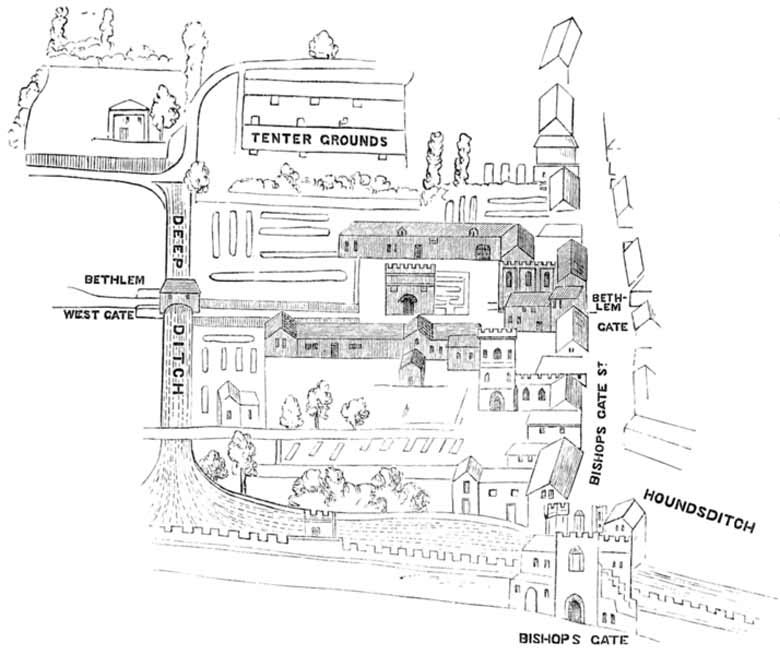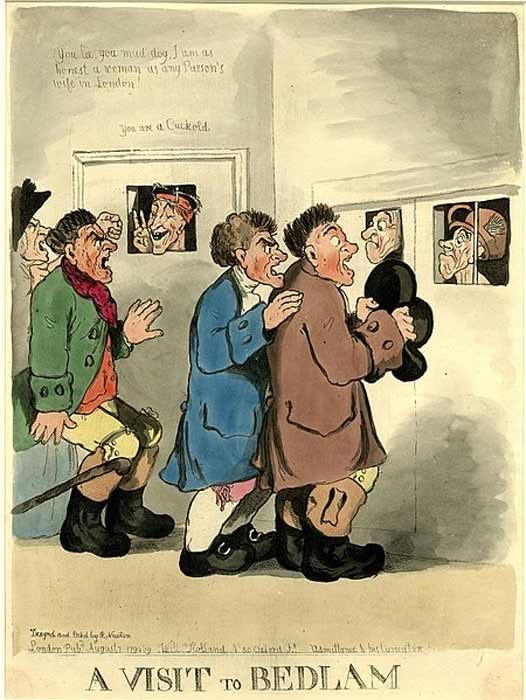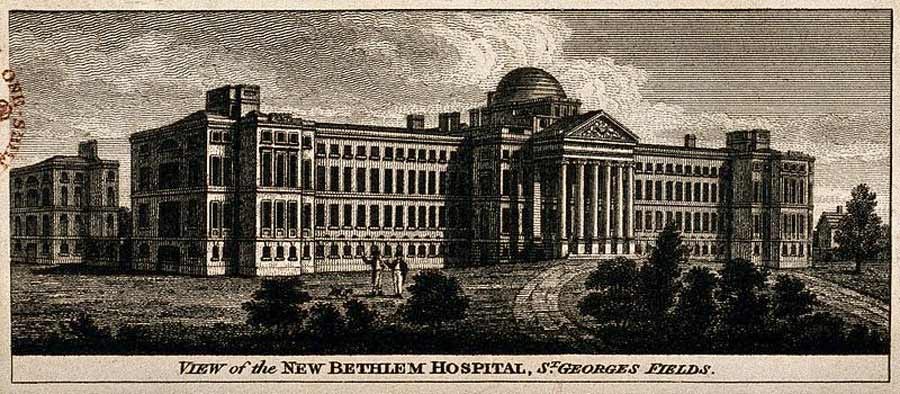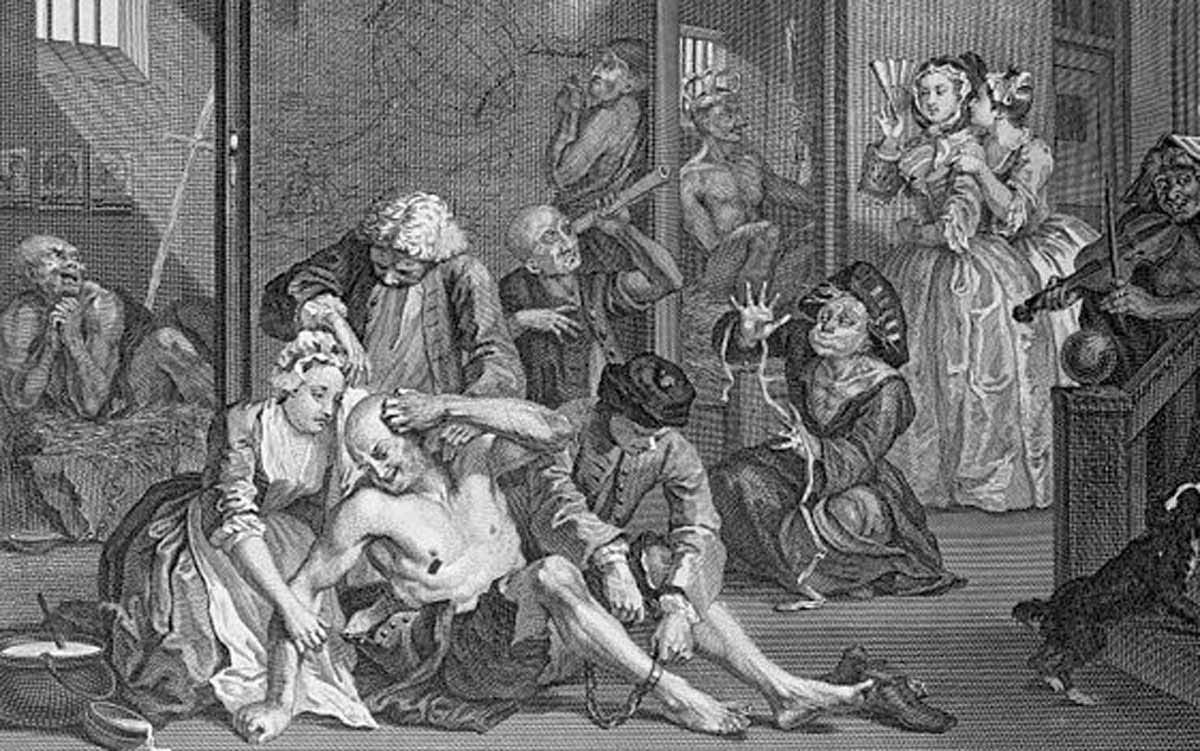Bedlam: The Evil Secret In The Heart Of London
Bethlem Royal Hospital or St. Mary Bethlehem was the first psychiatric hospital in England. For many years, it was known for its inhumane conditions which earned it the nickname of “Bedlam”, meaning madness or mayhem. Its history is the inspiration for many horror books, movies, and TV shows. The hospital was even once a popular tourist attraction in London, offering morbid entertainment to the curious.
Bethlem was founded in the year 1247, and its history reflects the changing views on the care and treatment of people suffering from mental illness. However, there is also a much darker history associated with the hospital. This process began when Bethlem became more secretive and conservative about their treatments, and eventually it led to widespread abuse of the patients.
Mental illness for a long time was thought of as a disease of the body and not of the brain. The hospital thought of curing the patients through strong medicines, and brutal treatments like blistering the skin with alkaline chemicals. Such drastic conditions often killed those patients.
The Origin Of The Hospital
The story of Bedlam begins in the 13th century, when a man called Simon FitzMary became the Sheriff of London. He had great respect for the Christian symbol of the Star of Bethlehem, as well as the Virgin Mary. Having grown rich, FitzMary donated land he owned in Bishopsgate on the edge of the City of London to the Bishop of Bethlehem, to create a charitable hospital. The Priory of St. Mary Bethlehem was accordingly established in 1247, to heal sick people.

This charitable institution became popularly known as Bethlehem Hospital, and Londoners called it Bedlam. The hospital was built over a single floor covering two acres of land. It had a courtyard with a chapel and contained 12 cells for patients. Moreover, it also consisted of staff accommodation, an exercise yard, and a kitchen. It remained on this site until 1676, when it was shifted to Moorfields, also in the City of London.
A Special Interest In The Mentally Ill
At a certain point early in its history, the attending monks started accepting patients who showed symptoms of mental illness. The exact time of when it began specializing in mental illness is still not confirmed, but by 1403 most of the Bethlem’s clients were considered “lunatic” patients. In this way, the first infamous mental institution was formed.
The psychiatric facility struggled to survive, and so in 1346 the City of London took it over. Its specialization in mental illness guaranteed it a good future, and it accepted a wide variety of patients, including those with learning disabilities, dementia, and epilepsy.
The first definitive record of the patients present inside the hospital was created when the Charity Commissioners visited in 1403. This record shows that six people were considered insane at that time, and the inventory of the hospital included 11 chains, four pairs of manacles, two pairs of stocks, and six locks. The transition process into a specialist institution for insane people carried on apace, and by the year 1460 was the overwhelming focus of the institution.
A Nightmare For Patients
The hospital accepted many patients over the centuries, and gradually began to change. The building of the psychiatric facility was dirty, dark, and cold, with no windows and no hot water. When a group of MPs visited the hospital for scrutiny in 1814, they were shocked at the sight of the small cells where people were chained to the beds or walls. Just one blanket was provided to each patient to protect them from rats and cold.
The treatments that were provided to the patients at that time were extremely brutal. Patients were placed at chairs suspended by ropes. These ropes were twisted together and when released, they spun the patient quickly around over 40 times, as they returned to their normal position. It was a way of punishment as much as an attempt at a cure, to assert dominance over patients.
Coldwater therapy was another way to shock the patients with mental illness. Here, the patients were submerged in cold water or wrapped in towels that were soaked in ice for a long time. These ghoulish treatments came from a limited understanding about the causes of mental illness. Everyone received the course of the same treatment, whether they were diagnosed as depressed, paranoid, or manic.
Mental illness was treated as a disease of the body rather than the mind. The patients were prescribed enforced vomiting, bleeding, and diarrhea to somehow purge their melancholic behavior. Moreover, caustic substances were applied to the surface of the skin of these patients to make it blister and burn, attempting to draw out the ill humors.
Scandalous Entertainment
One of the largest scandals of the history of Bedlam is the public visiting. The family and friends of the poor patients were expected to bring food with them to support the patient. But it was popular to allow visitors who had no connection with the inmates. Displaying the suffering of the inmates to the general public was something from which the hospital raised its income.

This practice dated back as far as 1598, when the Bridewell Governors, who were responsible for the administration of the hospital, decided to allow the public as it would provide them a great number of profits. An audience of the wealthy, educated, and upper class people of London were sought-after by the governors to be the visitors, and they provided huge success.
The Moorfields site remained visually magnificent from the outside, but on the inside it was cash-starved and operating without any scrutiny. By the 1750s, the hospital was accepting thousands of visitors who all paid to visit, and it became a top tourist attraction for all Londoners. And almost everyone who visited went to view the mentally ill housed there. Anyone was able to access the wards of Bethlem to stare at, abuse, and taunt the patients.
Reformation of Bedlam
In 1815, the year after the MPs had toured Bethlem, the hospital was moved to a new site at St George’s Fields, just south of the Thames. Several lessons had already been learned, and the introduction of new staff in a new building brought reforms. As per an 1818 report, the patients were now kept clean, well clothed, and were not under any restraint.

Action had been taken and the hospital was now well-managed. However, there were persistent financial scandals, which led to financial troubles and Bethlem being exempt from reforming legislation in 1828, 1832 and again in 1845. Reformers’ protests became extremely vocal, and the hospital’s exemption from outside scrutiny was finally ended in 1853.
After over six centuries, Bethlem finally was no longer an independent organization. The Bethlem Hospital’s notoriety was brought under control, and it ensured that there would be no more fear or dread in the place. In 1930, the hospital was again relocated to a new site, in Beckenham in Kent where it continued as a psychiatric facility. It is now present in the London Borough of Bromley.
Top Image: Detail from Hogarth’s Rakes Progress, depicting Bedlam. Source: William Hogarth / Public Domain.
By Bipin Dimri
References
From Bethlehem to Bedlam – England’s First Mental Institution. Available at: https://historicengland.org.uk/research/inclusive-heritage/disability-history/1050-1485/from-bethlehem-to-bedlam/
Bethlem Royal Hospital: why did the infamous Bedlam asylum have such a fearsome reputation? Available at: https://www.historyextra.com/period/victorian/bethlem-royal-hospital-history-why-called-bedlam-lunatic-asylum/




If you look closely at the top image of Detail from Hogarth’s Rakes Progress, depicting Bedlam, you will see a person standing next to the wall pondering the word “longitude” and drawings of the Earth and ships.
During the early 1730’s, British seafarers could only determine longitude by the method of taking “lunar distances”. This was a tedious method at sea. Having a reliable chronometer on board would have made celestial navigation easier to determine longitude but one did not exist.
John Harrison began his development of a maritime timekeeper at the same time Hogarth published this etching. However, it wasn’t until 1762 that Harrison’s fourth iteration of his chronometer proved reliable and successful, thus eliminating the need to take lunars.
Additionally, Hogarth may also have used the problem of solving longitude via lunars as a play on words based on the origin of the word “lunatic”.
If you liked this information, please take advantage of my free subscription to my Substack page, Maritime History.
Muslims must assimilate or relocate.. wake up UK